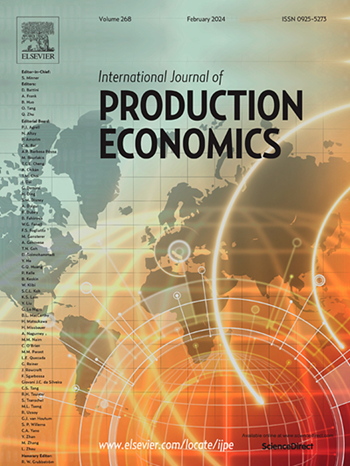Balancing worker and producer benefits in economic production quantity
IF 9.8
1区 工程技术
Q1 ENGINEERING, INDUSTRIAL
引用次数: 0
Abstract
Worker welfare and operational efficiency are critical components of production systems, yet they are often considered separately in the literature. This paper integrates these two aspects by extending the classical Economic Production Quantity (EPQ) model to account for worker fatigue accumulation and recovery. We use a linear function to model fatigue, estimated using the least squares method, as it provides a practical representation of fatigue pattern. By explicitly incorporating fatigue as a time-varying factor, this study provides a more accurate description of production dynamics, providing practical insights for labour-intensive industries such as manufacturing.
Unlike previous lot-sizing models that incorporate worker fatigue, this paper focuses on manufacturing, exploring challenges such as inventory buildup and depletion throughout the inventory cycle. The proposed model finds the optimal lot size by minimizing total costs for producers while ensuring workers protection through fatigue limits.
The model converges to the classical EPQ and EOQ models when specific input parameters are set to certain values, demonstrating its adaptability. An extensive sensitivity analysis using a 39 factorial design is conducted, resulting in a comprehensive computational analysis involving solving 16,427 optimization problems, which further strengthens the robustness of the proposed model. This enhances the understanding of model parameter interactions and ensures its applicability in real-world scenarios.
The findings suggest that integrating worker fatigue dynamics into the EPQ model not only optimizes production but also contributes to improved worker well-being and cost management. Thus, this model provides a mutually beneficial framework for both producers and workers.
求助全文
约1分钟内获得全文
求助全文
来源期刊
CiteScore
21.40
自引率
7.50%
发文量
266
审稿时长
52 days
期刊介绍:
The International Journal of Production Economics focuses on the interface between engineering and management. It covers all aspects of manufacturing and process industries, as well as production in general. The journal is interdisciplinary, considering activities throughout the product life cycle and material flow cycle. It aims to disseminate knowledge for improving industrial practice and strengthening the theoretical base for decision making. The journal serves as a forum for exchanging ideas and presenting new developments in theory and application, combining academic standards with practical value for industrial applications.

 求助内容:
求助内容: 应助结果提醒方式:
应助结果提醒方式:


